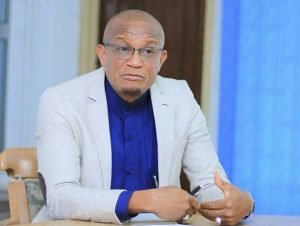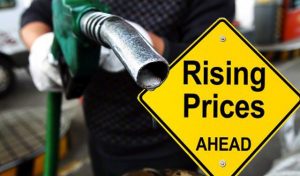The Chief Executive Officer (CEO) of the Ghana Association of Bankers, John Awuah, says the average lending rate in the country is currently pegged at 20%.
He made the revelation during an interaction on PM Express Business Edition with host, George Wiafe, on Thursday concerning the challenge of high interest rate.
“As at now, what is the average lending that your banks are willing to lend?” George Wiafe asked. Mr Awuah replied stating: “It is just about 20%, I think.”
The latter explained that the current lending rate, derived from the Treasury bill rate [91-day], interbank lending rate and policy rate, is less than what was recorded some years ago.
“Just a few years. Five to six years ago, lending rate, we were talking about 28 or 27%. Now, we are talking about 19 to 20%. That is almost 700 to 800 basis points off the lending rate. The lending rate is not just a number, it is a derivative. It is a derivative of the Treasury bill rate, the interbank lending rate and the policy rate. These three together will give you the Ghana Reference Rate upon which the bank will add on whatever premium in order to have the lending rate.”
The policy rate presently stands at 13.5%, whilst Treasury bill rate is about 13 or 14% and the interbank rate is 14.6%.
He further cited instances to buttress or justify the current 20% lending rate.
“Where do banks get their deposits? It is from customers, businesses and from wholesale fund managers. Today, if you are a bank and you go to a place like SSNIT, a pension company to take deposits, SSNIT will be taking Treasury bill rate plus either 1%.”
“Assuming you got there and take ¢1million at 14.5% + 1%, that is 15.5%. That ₵1million you have taken, you have not taken account of your cash reserve requirement, which means 8% of that ¢1million you are not going to use. This brings you to about 920,000. If you do the effective interest rate on that deposit you have taken from SSNIT, you are in the region of 16. 7%”, he mentioned.
“So a banks baseline cost of funding is 16.5%. What rate do you want the bank to lend? Staff cost has not come in, infrastructure cost, risk default cost has also not come in, before margin. By the time you price all these things, you are already around 20%”, he further pointed out.
He, however, revealed that “there are good companies as some banks are lending to around 17% or 18%.”
Such differences for him, he said only proves the existence of a thin margin.
Meanwhile, banks according to the CEO of the Ghana Association of Bankers do not focus on high interest rates to make money as higher interest rates means higher interest burden and probability of default to the bank.
“So banks don’t make money from higher interest rate. Actually, we get worried because the higher the interest rate, the higher the interest burden, the higher the probability of default.”
“Banks don’t make money from high-interest rate. They make money from the middle. They play in the middle so if you have taken money from a pension house and you have given the money to somebody, your profit is not the interest income, your profit is the net interest income so the thing that drives the base is what we should work on,” he added.
He held the view that lending rate would decline if the country sees a reduction in inflation or an appreciation of the exchange rate.
“When the macro variables trended downwards – inflation, policy rate, exchange rate, we will see lending rate going down. In the 2010’s or early 2020’s, where was the lending rate? It was almost around 30%. As they trended downwards, the lending rate has followed in tandem”, he noted.
“What people are looking for is, when policy rate drops by 1%, then my loan which was at 20% should come to 19%. It doesn’t work that way.”
This he said is because “the correlation is direct but is not proportional because it is the interplay of three different variables.”







